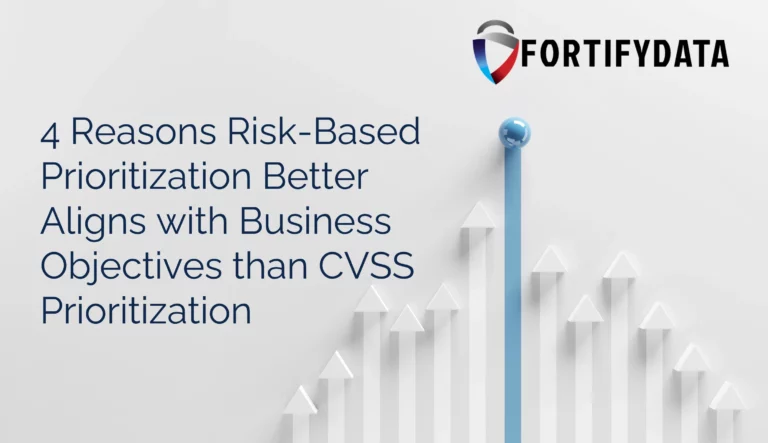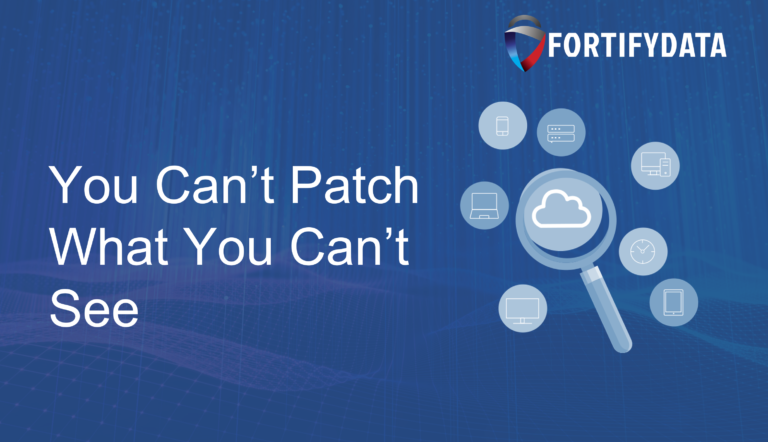
4 Reasons risk-based prioritization better aligns with business objectives than CVSS prioritization Traditionally, organizations have used Common Vulnerability Scoring…
"This is an excellent starting point for any organization that wants to get serious about their cyber risk management. The system has the capability to grow as you become more sophisticated in your use"
IT Director
Services Industry
Businesses face a wide range of cyber threats that can compromise their sensitive data and disrupt their operations. As the number and sophistication of these threats continue to increase, it is increasingly important for businesses to implement effective strategies for identifying their attack surface so they can take appropriate measures to secure their assets.
Getting a complete view of your attack surface can be difficult, as enterprise attack surfaces continue to grow. Industry analyst Gartner named attack surface expansion the number one security and risk management trend for 2022. “Risks associated with the use of cyber-physical systems and IoT, open-source code, cloud applications, complex digital supply chains, social media and more have brought organizations’ exposed surfaces outside of a set of controllable assets.”
But identifying your attack surface can help your organization more effectively manage vulnerabilities. According to a recent Forrester report (subscription required to read), “Modern vulnerability prioritization practices require an asset centric approach, which is vital to identifying and remediating an organization’s biggest vulnerability risks. Unfortunately, organizations are still not taking advantage of asset data to contextualize vulnerability risk.”
Attack surface management can help. Cyber asset attack surface management can give you an “attacker’s view” or an outside-in view of your organizations. According to Forrester, “organizations can use attack surface management to understand gaps in security controls protecting assets from vulnerability exploits, contextualize vulnerability risk, and prioritize remediations.”
So, how do you get started with an ASM approach to vulnerability management? Here are the four steps you should take:
There are a number of benefits to effective attack surface management. The most obvious is its ability to help to prevent data breaches and other security incidents, which can have significant financial and reputational costs. According to a study by the Ponemon Institute, the average cost of a data breach in the United States is $8.64 million.
Attack surface management can also help businesses to comply with various security and privacy regulations, such as the General Data Protection Regulation (GDPR) in the European Union and the Health Insurance Portability and Accountability Act (HIPAA) in the United States. Failing to comply with these regulations can result in significant fines and other penalties.
Additionally, effective attack surface management can help businesses to maintain the trust and confidence of their customers, partners, and other stakeholders. In today’s digital economy, trust is a critical factor in building and maintaining relationships, and customers are increasingly looking for companies that can demonstrate a commitment to protecting their sensitive information.
Overall, implementing a comprehensive approach to attack surface management is essential for effective vulnerability management and prioritization. By identifying and managing their attack surface and understanding which assets are more critical to the business, businesses can better understand and prioritize their vulnerabilities, thus reducing cyber risk and keeping their data safe.
How FortifyData can help
FortifyData’s solutions offer an automated way to discover your entire attack surface so you know the entry points an attacker can use to breach your organization. Beyond automatically discovering and managing your attack surface, we also allow the classification of assets so that you know what is most critical to your organization, and then we continuously detect vulnerabilities on those assets and rank them so you know what to prioritize first.
This comprehensive solution allows you to reduce the number of tools you need to effectively execute attack surface management and vulnerability management programs.



| Cookie | Duration | Description |
|---|---|---|
| cookielawinfo-checkbox-analytics | 11 months | This cookie is set by GDPR Cookie Consent plugin. The cookie is used to store the user consent for the cookies in the category "Analytics". |
| cookielawinfo-checkbox-functional | 11 months | The cookie is set by GDPR cookie consent to record the user consent for the cookies in the category "Functional". |
| cookielawinfo-checkbox-necessary | 11 months | This cookie is set by GDPR Cookie Consent plugin. The cookies is used to store the user consent for the cookies in the category "Necessary". |
| cookielawinfo-checkbox-others | 11 months | This cookie is set by GDPR Cookie Consent plugin. The cookie is used to store the user consent for the cookies in the category "Other. |
| cookielawinfo-checkbox-performance | 11 months | This cookie is set by GDPR Cookie Consent plugin. The cookie is used to store the user consent for the cookies in the category "Performance". |
| viewed_cookie_policy | 11 months | The cookie is set by the GDPR Cookie Consent plugin and is used to store whether or not user has consented to the use of cookies. It does not store any personal data. |